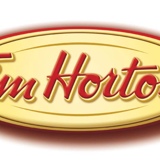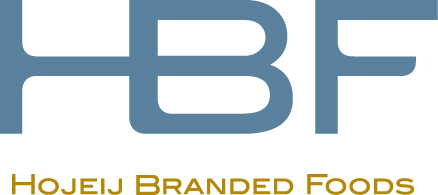Title Page
-
Conducted on
-
Prepared by
-
Location
-
Required supplies are at all hand washing sinks to include warm running water. Hand wash sinks<br>are only used for hand washing and not for preparing food or storing equipment. Hand wash is easily accessed by employees.
-
Hands are properly washed following proper hand washing procedures at the appropriate times. A<br>system is in place to ensure hourly hand washing by all employees preparing food.
-
Sanitized towel buckets contain a sufficient number of towels and sanitizer solution at the correct<br>concentration checked with the appropriate test strip.
-
Sanitizer-soaked towels and grill cloths used at food or beverage preparation areas must be placed<br>into the soiled towel bucket after using and not be left sitting out on kitchen surfaces.
-
All UHC trays, grill utensils, prep table utensils and utensil holders are clean (no build up) and are<br>washed and sanitized at least every 4 hours. Back sink and soap/sanitizer dispensers or<br>dishwashers must function (hot water 110° F or higher) and all supplies must be available. Check<br>that sanitizer solution has the right concentration with an appropriate test strip.
-
All soiled raw wares that came into contact with raw proteins (fresh beef and raw chicken) are washed and sanitized last. Soiled blue raw beef trays and lids are kept in blue bus box until cleaned. Back sink is properly sanitized after washing wares that came into contact with raw proteins.
-
Appropriate measures are taken to protect water and ice from foreign material, chemicals and/or bacterial contamination. Check that water filters are in date and the ice machine is free from mold or build up.
-
Opened packages of food in storage, (refrigerators and freezers) are covered/wrapped and stored<br>according to proper procedures.
-
Blue or colored disposable glove procedures or tongs are used to prevent cross-contamination<br>when handling all raw meat or poultry products (including shell eggs) at the grill station. Dedicated<br>utensils are used for raw products (e.g. the yellow egg yolk breaking tool is only used to break egg yolks).
-
Clear/white disposable gloves worn for food preparation of ready to eat foods at the sandwich prep<br>table, salad prep table, for iced/sweet tea preparation and in all other areas to prevent bare hand<br>contact with any cooked or ready-to-eat foods.
-
Chemicals are stored away from food.
-
The restaurant building, corral and any area within 10 feet (3m) from the building (i.e. inside the<br>drive thru lane) is clear from infestation by rats, mice, insects and birds. Check these areas for any<br>signs of pests. If the restaurant has signs of a pest infestation this question is considered a fail.<br>Include in the comments the specifics on what you observed. (Critical)
-
Pest management program and pest prevention steps and behaviors are in place and are being<br>managed effectively. The restaurant is properly pest proofed to prevent entry of pests (e.g. gaps<br>under doors are sealed).
-
Non-food spill clean-up procedures in place.
-
Walk-in freezer and any other primary storage freezers at 0° F (-18° C) or below. Secondary<br>storage freezers are keeping all products solidly frozen.
-
Refrigerated products inside all refrigerated units are at or below 40° F (4° C) (including<br>shake/sundae reservoir).
-
All refrigerated products are in code (within primary shelf life).
-
Secondary shelf lives of refrigerated foods held at room temperature and in refrigerators are marked<br>and the products are being used within their secondary shelf lives.
-
Leftover heated foods are discarded (including any shake/sundae mix removed from heat treatment<br>shake/sundae machines).
-
Pyrometer with needle probe is calibrated and working correctly.
-
The internal temperatures of beef patties after cooking are at or above 155° F (69° C). (Critical)
-
Internal temperatures of fresh HOTG beef patties are between 175 and 190 degrees after cooking. There are no signs of "pinking". (Critical)
-
The internal temperatures of raw chicken products after cooking are at or above 165° F (74° C). (Critical)
-
The internal temperatures of breakfast sausage after cooking are at or above 155° F (69° C) for<br>sausage made from beef or pork and 165° F (74° C) for sausage made from poultry. (Critical)
-
Cooked McMuffin round eggs have gelled yolks (are not runny). Internal temperatures are at or<br>above 155°F (69°C). (Critical)
-
The internal temperature of Filet-O-Fish portions after cooking are at or above 150°F (66°C)
-
All food, food packaging and cleaning chemicals are from approved sources.
-
Managers understand employee illness symptoms and reportable illness causes for when an employee cannot be working. Managers also understand when an employee can return to work after illness
-
All managers (including shift managers) are trained and certified in food safety through ServSafe (or<br>an equivalent and accredited food safety training course). (Critical)
-
All employees are trained and verified on food safety and sanitation per McDonald's current training program and in accordance with local regulations.
-
Managers (or staff assigned to complete the checklist) have been trained on and can demonstrate<br>how to properly complete the procedures on the Daily Food Safety Checklist. (Critical)
-
Manager know the "Big 6 Pathogens".
-
Manager knows what circumstances calls for closing of the restaurant and contacting the local health authorities.
-
At least the last 60 days of correctly completed Daily Food Safety Checklists are available.
-
Review the most recent health department inspection form, ensuring all food safety violations noted<br>by the health department have been corrected.
-
At least the last two correctly completed Monthly Food Safety Procedures Verifications are<br>available.
-
All hand washing sinks reach 100° F, including restroom.
-
Corral is clean and maintained. Dumpster lids are closed.










